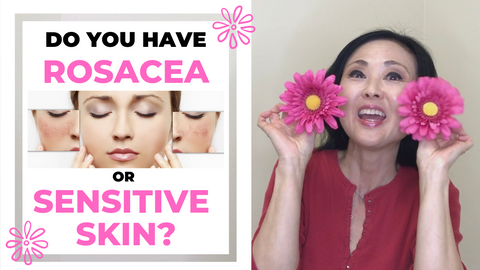Japanese seaweed Wakame, Nori, Kombu are 3 Japanese Foods that helps the body metabolize fat and helps slow down aging of the skin and body.
Just like the Eskimos have many words to describe snow, the Japanese have many words to describe Japanese seaweed, depending on what kind of seaweed you are referring to.
Japanese Seaweed Wakame:
Wakame is the most common seaweed that is used in daily traditional Japanese foods. It usually comes dried and you have to rehydrate it with water or cook in liquids. You want the texture to become slippery and almost lightly slimy.
Wakame is brown algae. It is commonly used in miso soup, and different types of seaweed salad such a hijiki salad.
Wakame was used in clinical studies to be used as a part of treatments to treat hyperpigmentation, anti aging, and acne.
The tannins found in wakame inhibited an enzyme that breaks down hyaluronic acid in the extracellular matrix which ages the skin.
Fucoxanthin is a brown pigment in wakame that has been shown to stimulate a protein that oxidizes fat and helps burn energy. It also has strong antioxidant ability against uv induced damage skin cells.
This brown algae has been show to help prevent lifestyle related diseases such as :
-obesity
-diabetes
-cancer
-other chronic diseases
Wakame also has a good source of trace minerals such as Tyrosine and Iodine which helps regulate thyroid , which in turn helps regulate hormone function. Which may contribute to Japanese women experiencing little to no menopausal symptoms such as poor sleep, night sweats, hot flashes and mood swings.
The traditional Japanese diet includes eating some sort of seaweed everyday at almost every meal.
Japanese Seaweed Nori
Nori is another form of Japanese seaweed that is typically crispy and crunchy in texture . It is used to wrap rice balls known as onigiri, and it is most commonly used with rolls. This is often known as seaweed rolls, or “nori maki”. Most people have seen it used in “California Rolls”.
Nori can also be sliced thinly to be sprinkled on over rice and noodles as a seasoning mix.
The traditional Japanese diet does not include foods that are high in fat or high in sugar so please note that crunchy rolls, and foods that come with sweet eel sauce is typically not the traditional Japanese “nori maki”.
Nori is made out of red algae and out of all the Japanese seaweed, it has the highest amount of Astaxanthin.
Astaxanthin is known as the King of the Antioxidants . It is an antioxidant that is 6000x stronger than vitamin C and does NOT break down when exposed to light.
In addition to the antioxidants, Nori has antimicrobial and antibacterial properties.
Kombu
Kombu is also a brown algae (Luminaria Japonica) and it is typically not eaten alone because the texture is tough and it is pretty thick. Like nori, it is rehydrated in water or liquids. Typically, Kombu is used for making stocks, broths, and soups. It gives a deep savory flavor known as “umami”.
Kombu can also come in powder form to be used with tea and it can be used to be rehydrated with water and topped over rice.
This where the original word for Kombucha comes from.
In the western world, Kombucha is referred to a tea fermented with sugar and yeast that creates probiotics.
The original term Kombucha comes from Kombu (kelp) + Cha (tea) = kelp steeped in green tea.
This particular seaweed was shown to have greater hydrating moisturizing effects than hyaluronic acid (sources below). It also has been shown to have detoxifying effects from heavy metals.
Health Benefits of Japanese Seaweed
Besides Wakame, Nori, and Kombu having a good source of vitamins and minerals, it also has a high amount of fiber and polysaccharides to help support gut health.
The peptides and polysaccharides in seaweed plays a major role in preventing collagen and elastin breakdown that leads to saggy skin.
The polysaccharide Fucoidin inhibits melanin production.
Wakame, Nori and Kombu also has shown in some clinical studies that 15 out of the 57 species of seaweed, have shown to have antimicrobial activities toward the acne causing bacteria P. Acnes, Staphyococcus Aerus, and Stapholoccus Epidermidis.
**Please note that if you have sensitivities towards Iodine, you may want to introduce it slowly into your diet and if you do not break out, then slowly increase consumption over time
Sources:
Follow us @:
YouTube Channel: https://www.youtube.com/channel/UC4XGWX6eheTisHo8UBsdOWA
Instagram:@GoSeeChristy
Facebook:https://www.facebook.com/goseeChristyBeautyBoutique/
Twitter:https://twitter.com/goseechristy
Pinterest:https://www.pinterest.com/goseechristy/



